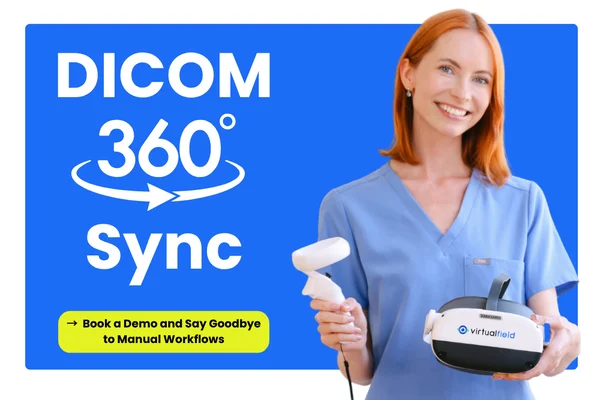Patients value time savings and quality care
When it comes to best practices for operating in the U.S. healthcare system, one thing that providers all have in common is their focus on patient experience. By providing stellar care in a timely and efficient manner that respects both the patient’s and the physician’s time, you can offer excellent care while maintaining a consistent intake of patients throughout the day.
By ironing out any kinks in your practice’s daily routines and becoming a more efficient operation, you can create an environment that’s more positive for your patients. No one likes going to the doctor’s office, but by taking some facts into consideration, streamlining your practice, and following these suggestions, you can create a positive patient experience that anyone can see.
Defining patient experience
Have you ever been to a business and felt like your time was being wasted, the service was terrible, or some other less-than-ideal issue kept cropping up? It’s very likely the answer is yes — and each one of those situations resulted in a poor customer experience. And while as a physician you’re likely reluctant to consider your patients as your customer, that’s exactly what they are from a business standpoint.
The Agency for Healthcare Research and Quality (AHRQ) defines patient experience as “the range of interactions that patients have with the healthcare system, including their care from health plans, and from doctors, nurses, and staff in hospitals, physician practices, and other healthcare facilities.” This often includes “several aspects of healthcare delivery that patients value highly when they seek and receive care, such as getting timely appointments, easy access to information, and good communication with health care providers.”
Providing your patients with a good experience while visiting your practice should seem like something all facilities strive for, but data suggests that’s simply not happening. According to The Beryl Institute – Ipsos PX Pulse survey from November 2022, 76% of the more than 1,000 Americans polled said they hadn’t had a positive patient experience in the prior three months, while 60% said they had a negative experience.
Keep in mind that patient experience isn’t the same as patient satisfaction. As the AHRQ points out, satisfaction is based on a person’s expectations and whether they’ve been met. That’s an important distinction to make because even if two people receive the same exact treatment, their satisfaction ratings may be different because of their individual expectations.
Why is patient experience important?
Patient experience is important for many reasons. It’s been noted that the better experience a patient has with a physician or practice, the more likely they are to follow after-care instructions and listen to medical advice, leading to better health outcomes. From a business standpoint, researchers in a 2009 study found that a good patient experience resulted in a reduced chance of being named in a malpractice suit by nearly 22%. It also results in less employee turnover and encourages patients to keep visiting your practice instead of seeking treatment elsewhere.
By integrating more efficient measures in your ophthalmology or optometry practice, you make the process easier and more enjoyable for everyone working there, as well as the patients. With proper procedures in place, check-in can be quick, a technician can gather information from the patient in a timely manner, and conduct the preliminary eye exam thereby allowing the eye doctor more time to examine, diagnose and treat the patient. All of this can combine to create a patient experience that lets the patient know they’re being attended to by competent and caring professionals who know what they’re doing and respect the patient’s valuable time.
Ways to boost efficiency and create a better patient experience
It’s one thing to know why you should increase efficiency in your practice, but it’s an entirely different thing to know how to bring about more efficient measures. To help with that process, here are six things you can do to make your medical office more efficient while creating a better patient experience.
Survey your patients about how their experience was. One great way of learning where efficiencies can be found when it comes to patient experience is to ask your patients. Certainly, if they experienced issues with your practice’s processes or noticed some hang-ups along the way, they will be more than willing to let you know about it. By finding the most common problem areas, you can more effectively target what needs changing. Conversely, by finding an experience patients prefer, like a virtual visual field exam, you can focus on what’s working well.
Take measures to cut down on wait times. This step goes beyond simply making sure patient visits move smoothly and in a timely manner — that should go without saying. But this also pertains to many other parts of running a medical practice. Don’t leave the phone ringing for several minutes and be sure to follow up on missed calls or emails. Patients don’t want to spend hours at a doctor’s office if they can help it.
Implement automation when possible. Over the last few years, automation has really become a driving force for efficiency in the healthcare space. There’s software out there that can tackle even the most tedious tasks that can clog up your practice’s business operations: appointment reminders, payment reminders and processing, reputation management, texting and emailing information about your practice and services offered, and more. Naturally, this won’t be a simple plug-and-play solution, since employees will have to be trained on the software, but once implemented, it can immediately begin freeing up your staff to be more patient-facing. Being efficient in back-office operations improves the patient experience when your team can spend more time with patients.
At Virtual Field, our DICOM 360 Sync transforms exam workflows into a fully connected, zero-touch experience — from patient setup to report sync to record attachment. Designed for eye care clinics that demand speed, accuracy, and effortless interoperability, this suite eliminates wasted time, reduces human error, and elevates patient care.
Make scheduling easier. Research shows that it takes about eight minutes to set up an appointment over the phone. These days, people seem less inclined to get on the phone for anything, instead opting for apps and websites to get things done. So why not meet your patients’ expectations and set up an online scheduling tool to divert some of that process away from the employees behind the desk and in your call center? Instead, use your team to check the next day’s schedules at the end of the day to make sure the physician isn’t overbooked and make any adjustments if needed.
Utilize your technicians where they’re best suited. Depending on your practice, you may have multiple technicians on staff to help multiple physicians treat patients throughout the day. If that’s the case, one way to increase efficiency is to create doctor/technician teams, that way the technicians become more knowledgeable in what each doctor requires for given types of patients so they can elicit the right information from the patient and conduct a more focused exam with appropriate testing before the doctor begins his encounter. That’s not to say the technicians won’t be able to switch teams in the event someone’s out sick or some other extenuating circumstance comes up.
With efficiency in place, establish a more personable experience. Finally, this isn’t just about finding efficiencies and putting them in place, but rather utilizing that newfound efficiency to create a better patient experience. Once the processes have been smoothed over and refined, the staff and the doctors will have more time to interact with the patient, and the patient will be happier and more receptive to the process and the care being delivered. Making the patient feel like a valuable customer will enhance their experience and the practice’s reputation will be enhanced.
From the moment your patients walk into your practice, it’s important that every step is smooth and efficient. Running a medical practice like a well-oiled, yet human-facing machine can boost your patients’ confidence in your abilities and overall professionalism. From check-in to examination to after-care, having an open line of dialogue with your patients while also respecting their time is not only a net positive for your bottom line as a healthcare business, but is also in your clients’ healthcare outcomes.
For more guidance on practice efficiency, browse our collection of webinars where we speak with expert guests who have optimized their operations.
About Virtual Field
Virtual Field delivers an exceptional eye exam experience. Eye care professionals including ophthalmologists and optometrists examine patients faster, more efficiently, and more comfortably than ever before. Exams include Visual Field, 24-2, Kinetic Visual Field (Goldmann Perimetry), Ptosis, Esterman, Color Vision, Pupillometry, Extraocular Motility (EOM), and more.


